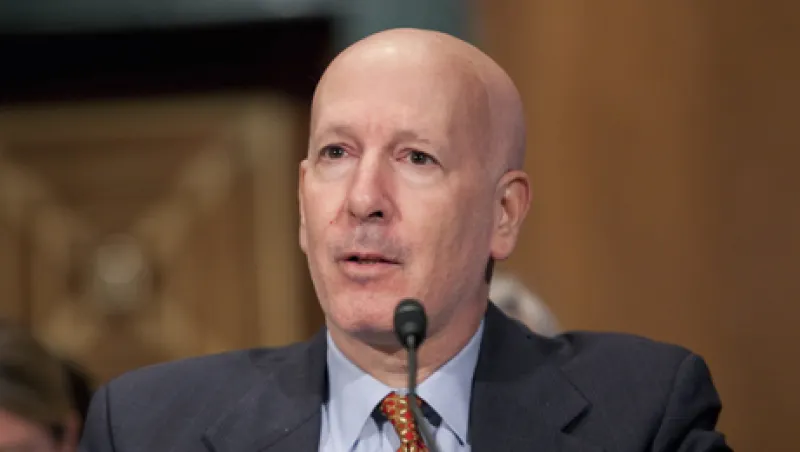The ‘recipes of institutional investment’ inherited from the past no longer seem to match up with the ingredients in today’s financial markets. For example, many of the truisms embedded in modern portfolio theory, such as normal distributions, standard deviation as a predictor of risk, rational investors, risk-free rates, stable correlations, etc, now seem... how can I put this delicately... ‘overly optimistic.’ In fact, in the wake of the Asian financial crisis, the Long-Term Capital debacle, the Internet bubble and bust, the ‘perfect storm’ in 2002-'03, the global financial and sub-prime crisis, the European debt crisis... and whatever’s about to happen next... you’d be forgiven for chucking your old finance textbooks out a moving car’s window. Many investors have come to see the abstractions in the Capital Asset Pricing Model, Modern Portfolio Theory, Efficient Markets Hypothesis, Mean-Variance Optimization, Value-at-Risk, or any of the traditional investment and risk models as potentially dangerous.
Why dangerous, you ask? Well, Gordon Clark and I have argued that these sorts of top-down models have been the principal driver for a layer of abstraction and derivation that the financial services industry has built atop the real economy. We’ve been led to believe that this abstract layer, which manifests in the form of financial products and services, was necessary to simplify the ‘highly complex’ business of finance and investment for the masses. So, for example, the decision whether or not to invest in a particular security (company stock or government bond) has been replaced with an assessment of the risk profiles of asset classes and products. Relationships with corporations have been replaced with relationships between product providers and consumers. Ironically, this attempt to simplify has actually resulted in a massive over-complication. In the end, we see greater and greater levels of opacity and even secrecy in finance. And, troublingly, the financial services abstraction has also left the big institutional investors paying much higher fees and costs than they are aware of. (Dear Giants: If you think you know how banks and managers are making money off you, then you know even less about banking and asset management than I thought. Trust me. You think you know? You. Don’t. Know.)
Anyway, the abstract finance layer sitting atop the real economy is what has allowed the financial services industry to be so successful. And this is why I think we need new models that remove some (albeit not all) of the abstractions and re-inject a healthy dose of ‘reality’ into everything investors do. To make this more concrete, I’d like to direct you to agent-based models (ABMs), as I think they could be quite profound. I encourage everybody to read Richard Bookstaber’s paper entitled, “Using Agent-Based Models for Analyzing Threats to Financial Stability.” It really opened my eyes to the power of these bottom-up approaches to modeling. Here’s some blurbage directly from the paper:
First, here’s Bookstaber’s take down of the top-down approach:
“The simplifying assumptions of a DSGE [Dynamic stochastic general equilibrium] model, which are typical for traditional, top-down analytical models, facilitate mathematical tractability but at the same time limit their appeal for modeling market crises. For example, in a DSGE model, the risk is introduced through well-specified exogenous shocks that do not change through the actions taken by the agents, whereas in a real crisis, the risk tends to come from the actions of the agents themselves, such as the pulling away of liquidity, the fire sales due to forced liquidation, and the withdrawal of sources of funding. Agents react, adapt in their behavior, and in doing so create endogenous uncertainty... Furthermore, the assumption of rationality and optimization—and with it the ability of the actors to solve a multi-period decision—is not realistic during a crisis (if it is ever realistic). During crises, historical relationships no longer hold, the course of events depends on feedbacks among agents, and the key determinants of those feedbacks are unknown—who is leveraged, what positions they might have to liquidate, how the banks might alter their funding with shifts in the value of their collateral. The very notions of a representative agent and of an equilibrium model itself are inherently inappropriate for modeling a crisis.”
Second, here’s what Bookstaber thinks is a better approach: ABMs.
“[In ABMs], the system is not directly modeled as a globally integrated entity. Systemic patterns emerge from the bottom up, coordinated not by centralized authorities or institutions (although these may exist as environmental constraints) but by local interactions among autonomous decision-makers. This process is known as ‘self-organization’... An ABM need not use a representative agent. The agents can have different rules and heuristics, endowments, and objectives. This heterogeneity readily allows models to incorporate gaming behavior and informational asymmetries... The decisions undertaken today by an agent directly depend on the past choices made by other agents in the population, thus creating strong path dependence... Interdependence may involve iterative processes through which agents influence other agents, who in turn influence others. An ABM thus describes a system from the perspective of its constituent units. A priori constraints on agent interactions can be dictated by the realities of the problem being addressed rather than being imposed based on equilibrium conditions, homogeneity assumptions, or mathematical regularity conditions that are required by analytical frameworks.”
Fascinating. So ABMs are the future, right? Well, not so fast. ABMs are apparently quite threatening to mainstream economists:
“Although it may be a promising approach to deal with financial vulnerability and crises, ABMs remain outside the mainstream of economic and financial research. One reason is that they present a clear challenge to many of the methods and machinery built up around the neoclassical school. Another is that because agent-based modeling does not represent the world in a set of clean and elegant equations, it does not lend itself to the standard mode of academic publication. Axelrod (2006) has noted the problems of ABMs in mainstream economics: “ABM can be a hard sell. Since most formal theorists equate models with mathematical models, it is not surprising that some of them are hard to convince about the appropriateness and value of an agent-based simulation.”
I myself have faced off against the ‘mainstream’ economists for years due to my belief that case studies and fieldwork offer fruitful lessons and insights for academic research. (Yeah, that’s crazy, I know). So I’m obviously very interested in ABMs as well. These are tools that really focus on the idiosyncrasy and local complexity of economic life, and then, on top of that layer, build more differentiation and irrationality in dynamic ways. That’s far more appealing than a model that seeks to impose a general equilibrium on top of people that are quite obviously irrational and idiosyncratic. Anyway, in my view, this approach could be very useful in removing some of the layers of abstraction in finance (that seem to most serve finance professionals) and, in turn, allow us to re-root finance in the real economy. At the very least, ABMs can create a layer of abstraction that is better than the current one. And I think that’d be a very cool thing to do...






